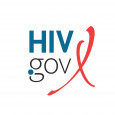As the Medicaid unwinding period continues, I’d like to share some additional actions and resources for those that may be impacted or those working with impacted populations.
As a reminder, at the end of March—along with Marlene McNeese at a PACHA meeting in Washington, D.C.—I put out a call to action via video for partners to immediately help people living with HIV avoid gaps in coverage by redetermining eligibility for Medicaid. I also shared additional resources and information at the beginning of May.
All states have begun the process to redetermine eligibility for all Medicaid enrollees, including those with HIV. While it is still early in the unwinding process, early reports indicate that hundreds of thousands of individuals have lost their Medicaid coverage, many of them for procedural reasons. A recent poll by Kaiser Family Foundation found that 65% of Medicaid beneficiaries were not aware that states could now remove people from Medicaid programs. This shows that we must take an all-hands-on-deck approach to ensuring those with Medicaid coverage are aware of the actions needed to ensure continuity of coverage or how to find additional coverage if disqualified.
During the COVID-19 public health emergency, states received enhanced federal funding to keep people continuously enrolled in Medicaid. That continuous enrollment period has now come to an end in all states. Some experts estimate that between 5 million and 14 million people will lose Medicaid coverage during the unwinding period. Healthcare coverage gaps are particularly serious for people with HIV.
Action Steps – Updated!
There are key actions for Medicaid enrollees to take. And, if you work with people with HIV, please make sure you communicate these messages:
- Update your contact information (address, email, phone number) with your state Medicaid office.
- Check your mail and open any letters from your Medicaid program. If you get a renewal form, complete and submit it right away.
- Apply for coverage even if you don’t think you’re eligible. If you have children, your children might qualify, even if you don’t. To reapply, visit your state’s Medicaid website. You can find links to all programs here.
- Need more help? Visit LocalHelp.HealthCare.gov to get help from someone in your area. This service is free and can help you better understand your family’s health care options. If you have a Ryan White HIV/AIDS Program (RWHAP) or other case manager, please work with them to take any needed steps.
- Protect yourself from fraud! Your state Medicaid office will never threaten you with legal action or ask for payment for you to keep or qualify for Medicaid or Children’s Health Insurance Program (CHIP) coverage. Avoid scams and get to the official place to renew by visiting Medicaid.gov/renewals.
If you have recently lost your Medicaid coverage, there are several steps you can take:
- If your coverage ended recently because you didn’t send in your renewal form, complete, and send it back right away. You may be able to restart your coverage without a new application.
- If you aren’t sure if you lost Medicaid or CHIP, or believe you’re still eligible, contact your state Medicaid office to confirm.
- Explore low-cost, quality health coverage options through the Health Insurance Marketplace at HealthCare.gov.
Please watch the video below to be reminded of key messages and action steps to avoid gaps in coverage.
Resources
Many resources have been developed to assist service providers, Medicaid programs, and beneficiaries to understand this period. Please see below for several key resources:
- For additional resources on the Medicaid continuous enrollment unwinding period, please visit Medicaid.gov, which includes, for example, toolkits in several languages and states’ timelines for starting the Medicaid unwinding process.
- NEW – CMS has developed materials for those who may have lost Medicaid coverage.
- The HIV/AIDS Bureau (HAB) at the Health Resources and Services Administration has also issued a program letter regarding the Medicaid unwinding process. The letter outlines action items and resources that Ryan White HIV/AIDS Program recipients and subrecipients can use to assist clients to renew or enroll into new health coverage. HAB also has additional resources related to Medicaid unwinding, including an on-demand webinar.
- The Administration for Community Living published a blog with tips for aging and disability networks.
- The Kaiser Family Foundation published a brief, 10 Things to Know About the Unwinding of the Medicaid Continuous Enrollment Provision.
- NEW – Georgetown University’s Health Policy Institute, Center for Children and Families has a 50-State Unwinding Tracker dedicated to linking to the most current information about the unwinding process in all states. Their Unwinding Continuous Coverage page is updated frequently with new information.
This blog post was originally published May 31, 2023, by HIV.gov. It is republished with permission.








Comments
Comments